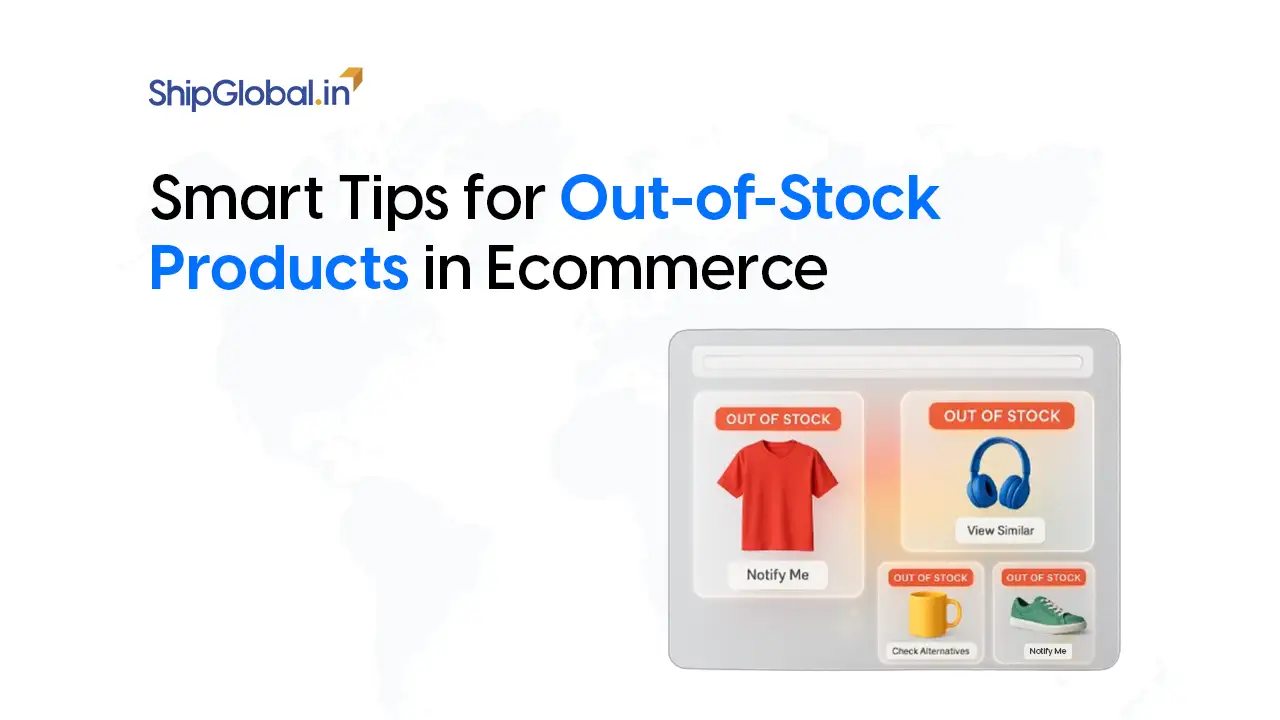Amazon Prime Day is no ordinary sales event, it’s a shopping holiday that can make or break a seller’s year. For brands and merchants, the ability to optimize inventory for Prime Day is critical to meeting high demand, keeping customers happy, and outperforming the competition. Without the right mix of Prime Day inventory tips, efficient shipping strategies, and FBA preparation, even the best deals can fall flat. In this guide, we’ll cover proven inventory forecasting techniques, shipping schedule optimization, and logistics best practices so you can approach Prime Day with confidence and a rock-solid plan.
In this guide, we’ll go deep into:
- Prime Day inventory tips from top-performing sellers
- FBA preparation strategies to avoid warehouse bottlenecks
- Advanced inventory forecasting techniques to match demand
- Shipping schedule optimization for peak season
- Logistics best practices to stay ahead of delays
- Order processing efficiency for faster turnarounds
- Supply chain optimization so you’re never caught short
- Stock level management that keeps storage costs down but sales flowing
By the end, you’ll have a playbook for not just surviving Prime Day, but thriving.

Why Optimize Inventory for Prime Day Early
Many sellers think Prime Day prep starts in late June. Big mistake. If you wait that long, you’ve already lost half the battle. Top sellers begin their Prime Day inventory tips planning 3–6 months because:
- FBA preparation times increase in length as the next (i.e., December) deadline approaches.
- Shipping schedule optimization gets harder as carriers fill up.
- Supply chain optimization requires time to secure raw materials and manufacturing slots.
- Demand forecasting is more accurate when trends are tracked over a longer horizon.
If you’ve ever been in the middle of Prime Day and seen your “Out of Stock” notification pop up, you already know how costly poor stock level management can be.

In the weeks after Prime Day, study your performance reports. Identify where you overstocked, understocked, or experienced slow fulfillment. This post-event analysis will improve your inventory forecasting techniques for the next year.
Prime Day Inventory Tips to Optimize Inventory for Prime Day
Let’s break down the essentials.
- Start with Historical Data: Review sales from the past 2–3 Prime Days, Q4 peaks, and recent trending months. Good inventory forecasting techniques combine seasonal patterns with recent momentum.
- Identify Your Core SKUs: If you sell 100 products, not all of them will be Prime Day heroes. Focus your stock level management on the top 20% that drive the majority of sales.
- Plan for Velocity Changes: Lightning Deals, Amazon ads, and influencer promotions can triple your normal sales rate. Your fulfillment strategies need to match that acceleration.
- Use Tiered Restocking: Instead of sending all your FBA inventory in one batch, stagger shipments so you can adapt if demand exceeds forecasts. This is a smart logistics best practice move to avoid storage limits.
- Don’t Forget Post-Prime Day Demand: Some products, especially everyday essentials, see a sustained lift after Prime Day. Your inventory forecasting techniques should account for this secondary wave.
Efficient Shipping Strategies for Optimize Inventory for Prime Day
Inventory prep is worthless if products aren’t available for customers to buy. That’s where efficient shipping strategies make or break Prime Day performance.
- Ship to FBA Early: Build in a 2–3 week buffer for FBA preparation delays. Amazon warehouses often experience a backlog as sellers flood them with shipments in June.
- Leverage Multiple Fulfillment Centers: Splitting stock across regions speeds delivery and aligns with logistics best practices by reducing last-mile strain.
- Maintain FBM Backup Stock: If Amazon misplaces a shipment or delays check-in, FBM inventory keeps your listings active. This backup is a critical fulfillment strategy.
- Schedule Carrier Pickups Wisely: For shipping schedule optimization, avoid Fridays and Mondays when carrier volume is highest. Midweek pickups often move faster.
Mastering FBA Preparation for Prime Day
Getting FBA preparation wrong can derail your entire Prime Day. Amazon’s requirements are strict, and during peak times, errors can mean days or weeks of delays.
- Follow Packaging Rules Exactly: Incorrect labeling, polybagging, or barcoding can lead to rejected shipments.
- Plan for Split Shipments: Sending to multiple FCs helps with supply chain optimization and speeds delivery.
- Track Inbound Shipments Daily: Don’t assume your products are live; delays are common.
- Pre-Label Inventory: Speeds up Amazon’s check-in process, improving order processing efficiency.
Export Expert: Use Amazon’s Restock Limits dashboard early. If you’re nearing your cap, redirect overflow to a 3PL until you can replenish FBA.

Use Amazon’s Restock Limits dashboard early. If you’re nearing your cap, redirect overflow to a 3PL until you can replenish FBA.
Advanced Inventory Forecasting Techniques
Basic forecasting is good, but advanced inventory forecasting techniques give you a competitive edge.
- Blend Multiple Data Sources – Combine Amazon reports, Google Trends, competitor tracking, and even weather forecasts if seasonality matters.
- Simulate Demand Scenarios – What happens if sales double? Triple? Build your stock level management around these contingencies.
- Account for Returns – Especially in categories like electronics and apparel, higher returns can cut into available sellable stock.
- Use Safety Stock Buffers – Holding 10-15% extra inventory helps absorb unexpected surges without overpaying storage fees.
Logistics Best Practices and Supply Chain Optimization
Your supply chain optimization strategy should be more than just moving boxes; it’s about anticipating risks.
- Pre-Book Supplier Slots – Prime Day sellers who wait until May to place orders often face manufacturing bottlenecks.
- Use Multiple Warehousing Locations – Cuts down shipping time and supports efficient shipping strategies.
- Set Automated Reorder Points – Software alerts prevent stockouts before they happen.
- Partner with Flexible 3PLs – A good 3PL can scale quickly when order processing efficiency spikes.
Order Processing Efficiency: Where Margins Are Won
During Prime Day, even a 12-hour delay in order processing can mean hundreds of missed sales.
- Automate FBM Order Routing
- Use Barcode Scanning for Pick-and-Pack
- Implement Double-Check QC to Reduce Returns
When order processing efficiency improves, customers get faster deliveries, reviews are more positive, and your Buy Box win rate increases.
Final Thoughts: Fulfillment Strategies That Win Prime Day
If you want to crush Prime Day, you can’t just throw products into Amazon and hope for the best. You need a deliberate plan that combines Prime Day inventory tips, airtight FBA preparation, advanced inventory forecasting techniques, proactive shipping schedule optimization, and bulletproof logistics best practices.
By tightening stock level management, boosting order processing efficiency, and committing to supply chain optimization, you set yourself up for more sales, better reviews, and higher rankings, not just on Prime Day, but for months afterward.
Prime Day success isn’t luck. It’s preparation, discipline, and execution. And if you start today, you’ll be ready to meet demand head-on when the sales frenzy begins.
FAQs
To optimize inventory for Prime Day means planning stock levels, shipping schedules, and fulfillment strategies so you can meet high customer demand during Amazon’s sales event.
The best Prime Day inventory tips include forecasting demand early, preparing FBA shipments in advance, keeping backup FBM stock, and using stock level management to avoid sellouts.
FBA preparation ensures products meet Amazon’s requirements, are checked in on time, and are distributed across warehouses, improving delivery speed and order processing efficiency.
Effective inventory forecasting techniques utilize historical sales data, competitor trends, marketing campaigns, and seasonal insights to accurately predict demand spikes.
Shipping schedule optimization ensures that your inventory arrives at fulfillment centers before the sales rush, reducing delays and maintaining product stock levels.








